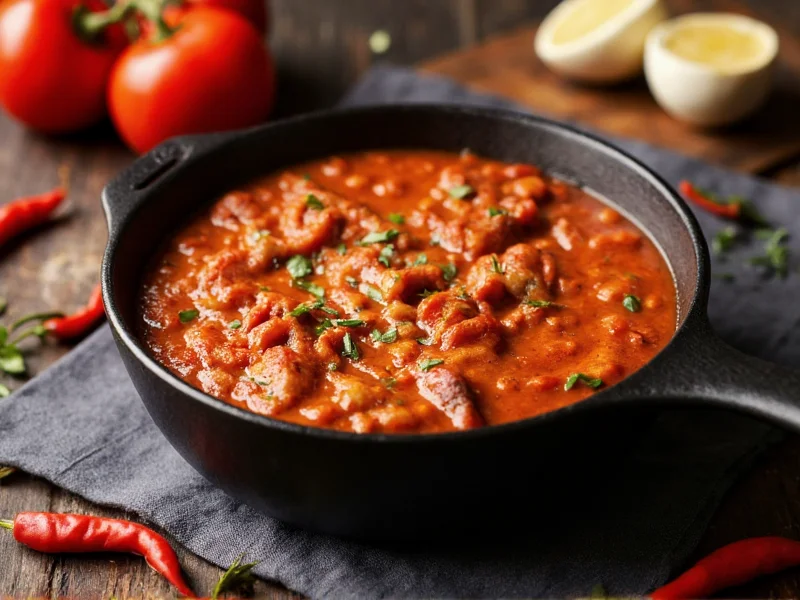When you order "medium spicy" at a restaurant or follow a recipe calling for medium heat, you're entering a specific range on the spice spectrum. This level represents a thoughtful balance between flavor and heat that enhances rather than dominates the dining experience. Unlike mild spice which barely registers, medium spicy creates a pleasant warmth that builds gradually and dissipates relatively quickly.
Understanding the Scoville Scale and Medium Spice
The Scoville scale, developed by pharmacist Wilbur Scoville in 1912, measures the pungency or "heat" of chili peppers and spicy foods. Originally determined through human taste testing, modern measurements use high-performance liquid chromatography for precise quantification of capsaicinoids—the compounds responsible for spiciness.
| Spice Level | Scoville Heat Units | Common Examples |
|---|---|---|
| Mild | 100-1,000 SHU | Poblano peppers, banana peppers |
| Medium | 1,000-15,000 SHU | Jalapeño peppers, pepperoncini |
| Hot | 15,000-100,000 SHU | Serrano peppers, Tabasco sauce |
| Extra Hot | 100,000+ SHU | Habanero peppers, ghost peppers |
What Makes Medium Spicy Different From Other Levels
Medium spicy occupies a crucial middle ground in culinary experiences. Unlike mild spice that barely registers, medium creates a noticeable warmth that builds gradually over 10-20 seconds after consumption. This level allows the complex flavors of spices to shine through while providing enough heat to stimulate endorphin release without causing significant discomfort.
When exploring what does medium spicy mean on menus, consider that this level typically uses jalapeño peppers as the benchmark. A single jalapeño ranges from 2,500 to 8,000 SHU, placing it firmly in the medium category. However, preparation methods significantly affect the final heat level—removing seeds and membranes reduces heat by up to 80%, while adding vinegar or sugar can balance perceived spiciness.
Regional Variations in Medium Spice Interpretation
Cultural context dramatically influences what qualifies as medium spicy. In regions with high spice tolerance like Thailand or India, medium might equate to what Americans would consider hot. Conversely, in areas with less spice tradition, medium might lean toward the milder end of the spectrum.
When ordering medium spicy food internationally, understanding local spice norms becomes essential. Thai medium might incorporate bird's eye chilies (50,000-100,000 SHU), while Italian "medium spicy" often means simply adding red pepper flakes to taste. This cultural variation explains why travelers sometimes experience unexpected heat levels despite ordering "medium."
Practical Applications for Medium Spice Level
For home cooks wondering how hot is medium spicy on Scoville scale, practical application matters more than precise measurements. When adjusting recipes to medium spice level, start with small amounts of fresh peppers or dried spices, tasting frequently as you go. Remember that heat intensifies as dishes cook and sits, so what seems mild initially may become medium spicy after 20 minutes of simmering.
Professional chefs often use the "taste and adjust" method rather than strict measurements. For consistent medium spice in sauces, many restaurants use calibrated pepper extracts that provide precise heat levels. Understanding medium spicy vs hot spice level helps prevent common kitchen mistakes like adding too much cayenne or misjudging fresh pepper potency.
Determining Your Personal Medium Spice Tolerance
Individual spice tolerance varies significantly based on genetics, exposure frequency, and even current health status. The TRPV1 receptor, which detects capsaicin, differs in sensitivity among populations. Regular consumption of spicy foods can increase tolerance over time through receptor desensitization.
If you're unsure about your medium spicy food tolerance, start with smaller portions of medium-spiced dishes and gradually increase. Pairing spicy foods with dairy products like yogurt or milk can mitigate excessive heat while you build tolerance. Many spice enthusiasts find that developing a medium spice preference opens doors to exploring more complex flavor profiles in global cuisines.
FAQ
What does medium spicy mean on restaurant menus?
Medium spicy on menus typically indicates a moderate heat level between 1,000-15,000 Scoville units, providing noticeable warmth without overwhelming discomfort. This level usually features jalapeño peppers as the primary heat source, with seeds often included but not in excessive amounts.
How does medium spicy compare to hot on the Scoville scale?
Medium spicy ranges from 1,000-15,000 Scoville Heat Units, while hot typically begins around 15,000 SHU and extends to 100,000+ SHU. Medium provides gradual warmth that dissipates relatively quickly, whereas hot spice creates immediate, intense heat that lingers significantly longer.
Can I adjust medium spicy dishes to my personal tolerance?
Yes, you can adjust medium spicy dishes by adding dairy products like yogurt or sour cream to counteract heat, incorporating sweet elements like honey, or diluting with additional non-spicy ingredients. When cooking, start with half the recommended amount of peppers and gradually increase until reaching your preferred medium level.
Why does medium spicy taste different at various restaurants?
Medium spicy varies between restaurants due to differences in pepper varieties, preparation methods, regional traditions, and chef interpretation. Some establishments remove seeds for milder medium heat, while others include them. Cultural background significantly influences what chefs consider "medium," explaining why the same menu designation can yield different experiences.











 浙公网安备
33010002000092号
浙公网安备
33010002000092号 浙B2-20120091-4
浙B2-20120091-4